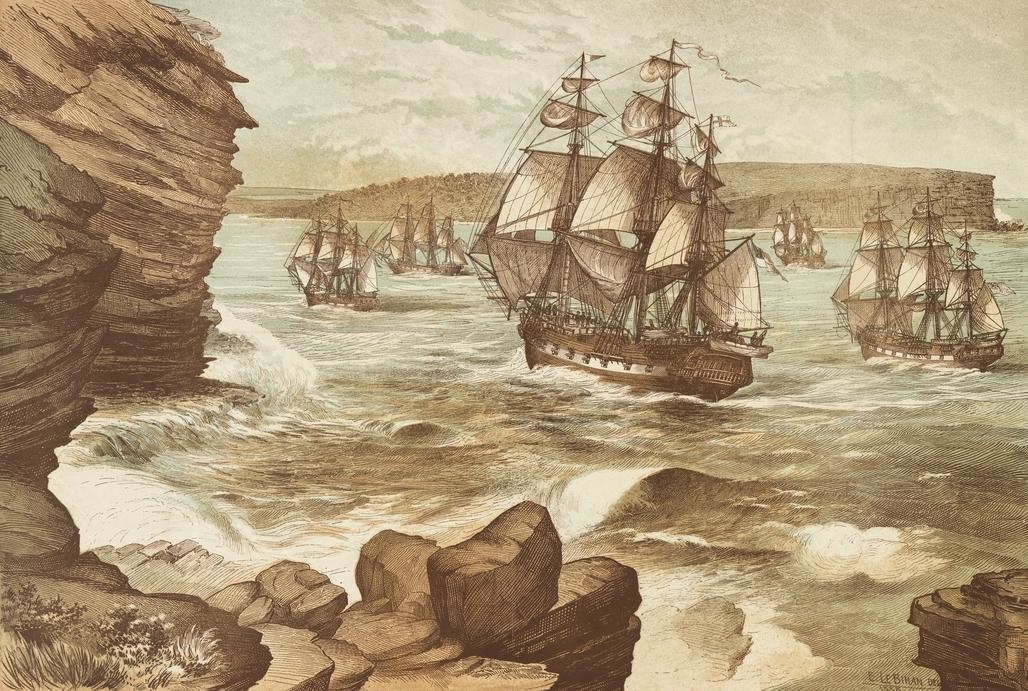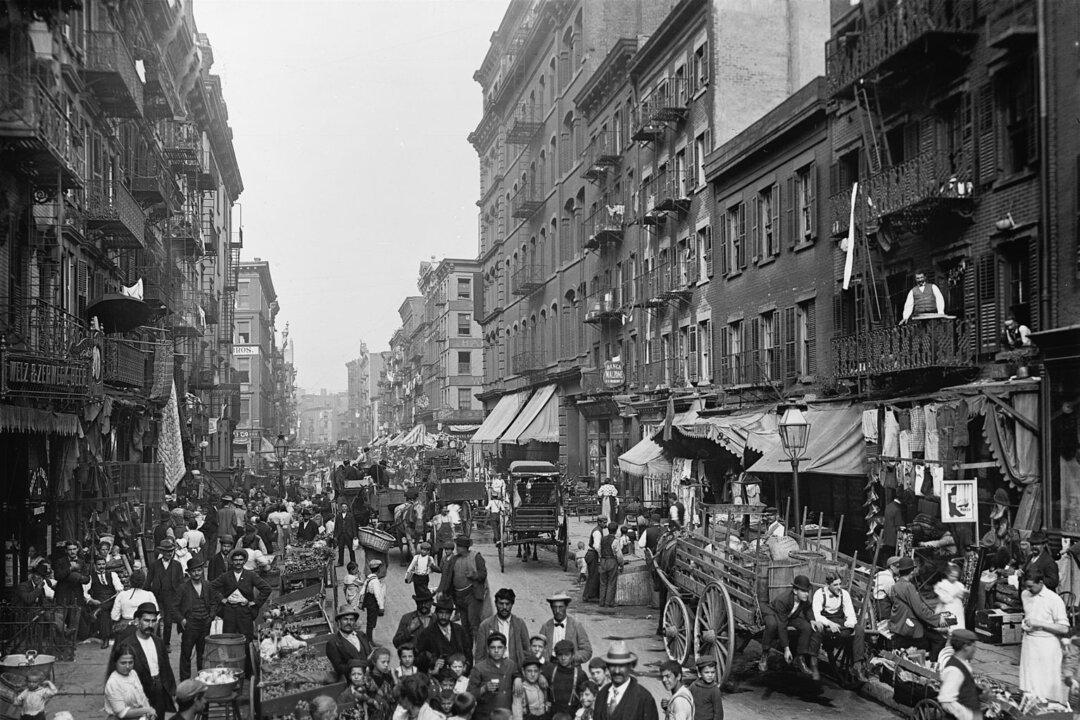While American delegates secretly met in Philadelphia in May of 1787 to discuss the need for a new constitution, 11 British ships sailed toward Australia to begin a new colony. Its “First Fleet” was composed of 1,400 people, including men, women, and children, ranging from members of the military and government to convicted criminals. The New South Wales penal colony was about to begin.

An artist's depiction of the first fleet of ships entering Port Jackson, a port in New South Wales (now Australia), in 1788. Public Domain






